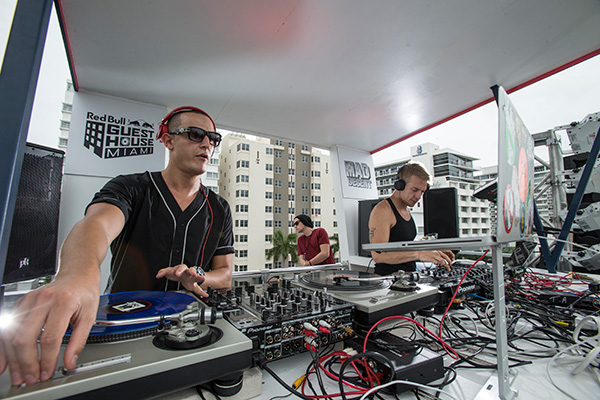This past Wednesday, I had the amazing opportunity to mix live for my radio show! Behind two decks, spinning songs, now feels naturally to me. Now, unfortunately, I didn’t have my usual set-up with me, so it wasn’t my best run, but performing live for an audience is a feeling like no other.
Ask any dancer, singer, actor, or musician: it’s exhilarating.
Since a lot of people lately have been asking me about mixing, I figured I could break it down here.
Before we even touch the hardware, there’s one basic skill when it comes to DJ’ing, and that is beatmatching. You have to feel the rhythm of a song, before lining up the next one. Like the ever-so-talented Zach Efrron revealed, “I like to start them off at 122 bpm, before locking on their heartrate and bumping it up to 128”.
Something like that, that movie was lame as hell anyway.
Once you learn how to beatmatch, you’ll be able to phrase songs together. Sure you’re on the beat, but if you’re not lining up phrases, it won’t be as clean as it can be. You want sounds to enter when other sounds exit, ok?
Most music deals in Four-Four time, Four counts for Four beats. The most basic of songs follow this structure. Particularly in electronic music, everything is built by groups of fours. In house music especially, a new sound is added or subtracted every 16 beats, or some multiple of four/sixteen. Next time you’re listening to a song, start counting in your head four counts and repeating, and see what lines up.
Of course, not every single song ever made adheres to this. And that’s where it gets tricky, and what separates the Carl Cox’s from the Steve Aoki’s.
Once you nail those basic principals, you can focus on song selection. Anybody can play any song, but it’s how you play it, how you mix it, any personal flair you add, that really makes you stand out. Prove those kids wrong that say, “Oh DJ’s just press play.” They’re not even worth your breath arguing.
A mantra I’ve always lived by, is that “A good DJ plays the song you want to hear. A great DJ plays a song you didn’t know you wanted to hear”. I strive to surprise my listeners every time I get behind the decks. It keeps things fresh. But of course, everyone always has those “go-to” songs/song combinations/transitions.
Now you have your songs, you know how to mix them together, what do you mix with? You don’t even need a physical controller. There are a lot of similar DJ softwares out there, which all accomplish the same thing, and if you know the basics I mentioned, then you can fly behind any deck, real or virtual.
Here is a picture of my personal controller, which runs on Serato DJ (Serato DJ Intro is the free version).

I work with the Pioneer DDJ-SB “Portable 2-Channel Controller”. Behind the decks, I can control and cue up to two songs. I can mess with volumes, or even individual layers of songs to intermix the two songs together, for whatever desired effect I want. Sometimes you want to weave them in together over a stretch of time, other times you want to slam in a drop right on beat.
We’ve got effects too. FX let you get creative, and put your own personal flair on a song. You’re not always just pressing play! For example, a high Pass filters cut out any low portions to a song, and an echo FX will…well give you an echo.
I’m a huge fan of this mixer because of how versatile it was for the price. Retailing for around $200-$250, I have gotten a lot of mileage out of my DDJ-SB over the past year.
Of course there are bigger and better models out there, but they all accomplish the same basic principle. Four decks and fancier FX sure would be nice to work with.
And of course there is always the traditional vinyl route. DJ Snake spins vinyls (bet you didn’t know that), and is an artistic form in it’s own. Peep the grandmaster, A-Trak’s hashtag, #RealDJing to get an inside look of the lifestyle. There’s nothing sweeter than hearing some scratching and cutting in 2016.
DJing is a fun hobby to learn and a good skill to bust out at parties. Be more than just “an iPod”. Flex your musical knowledge, educate the crowd, take them on a journey. Who knows, maybe even one day you’ll be headlining the main stage to thousands of people, or the underground with a hundred people packed into a tight club.

